This news item expired on Thursday, December 29, 2022 so the information below could be outdated or incorrect.
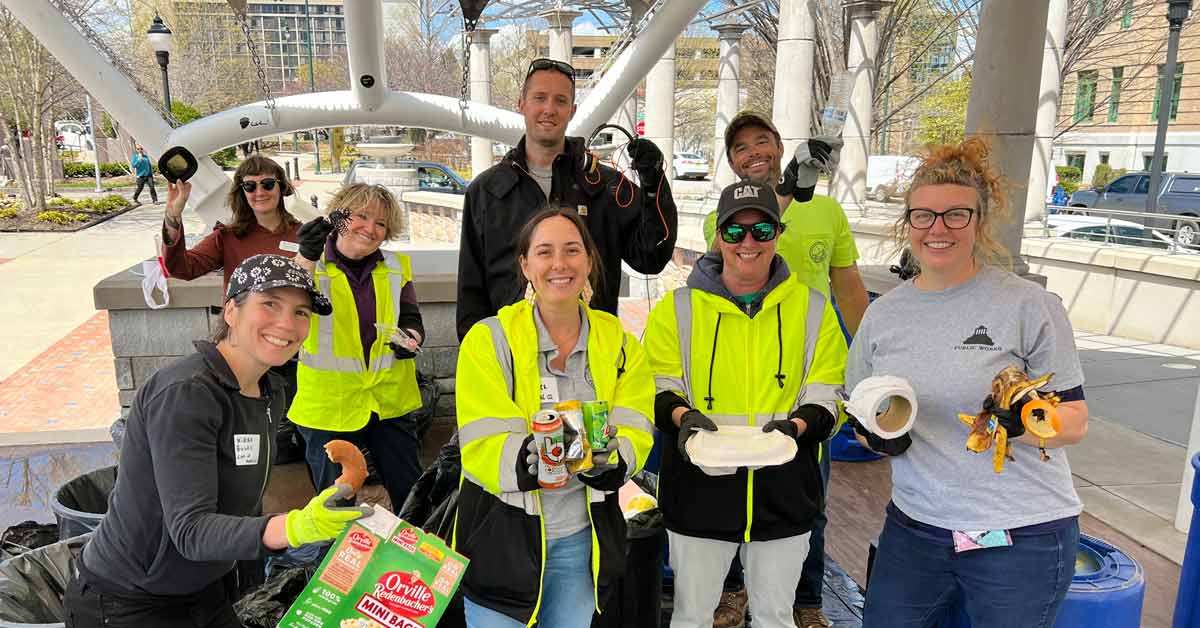
On a blustery spring day Buncombe County and City of Asheville staff and volunteers donned protective gear and faced off over an assortment of trash cans and recycling bins in the first ever City-County Waste Off. In collaboration with the Natural Resources Defense Council (NRDC), staffers collected, sorted, and categorized a week’s worth of waste material from City Hall and one day’s worth of waste material from the County’s administrative building. The data collected from this event will be used to help guide waste reduction programming internally and externally, and provide general recommendations as to how to reduce these wastes.
Talking trash
A week’s worth of trash from City Hall and a day’s worth of trash from 200 College St. was sorted, weighed, and categorized by County and City staff and volunteers in April 2022. The day’s-worth of waste from 200 College was then multiplied by five business days to attempt comparative analysis with City Hall waste.
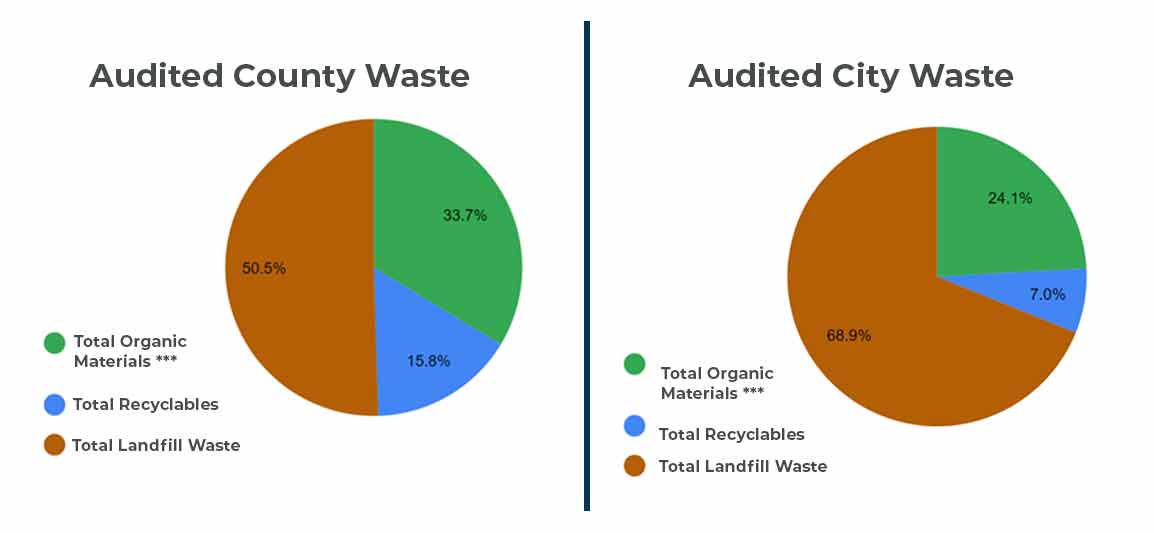
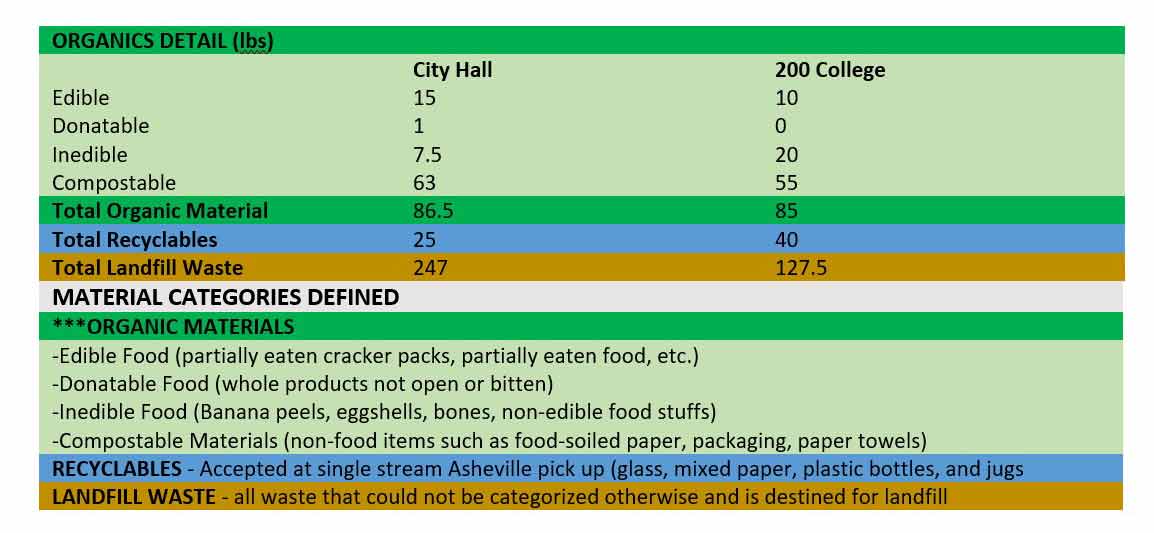
Notable Findings
- 247 lbs. of total waste material at City Hall were accumulated during one week’s worth of activities and audited for this study compared to 127.5 lbs. generated (25.5 lbs. audited) at 200 College. The City building produced almost twice as much waste as the County.
- 24.1% of the material in the City Hall waste stream was compostable, with the majority being non-food items such as food-soiled paper, packaging, and paper towels. 35% of 200 College’s waste was found to be compostable even though the building has implemented a pilot compost collection program.
- Of the food found in the 200 College waste stream, the largest category weighed was inedible food. At City Hall, this category was edible food.
- Recyclables comprised 15.5% of the waste stream at 200 College but only 7% of the waste stream at City Hall.
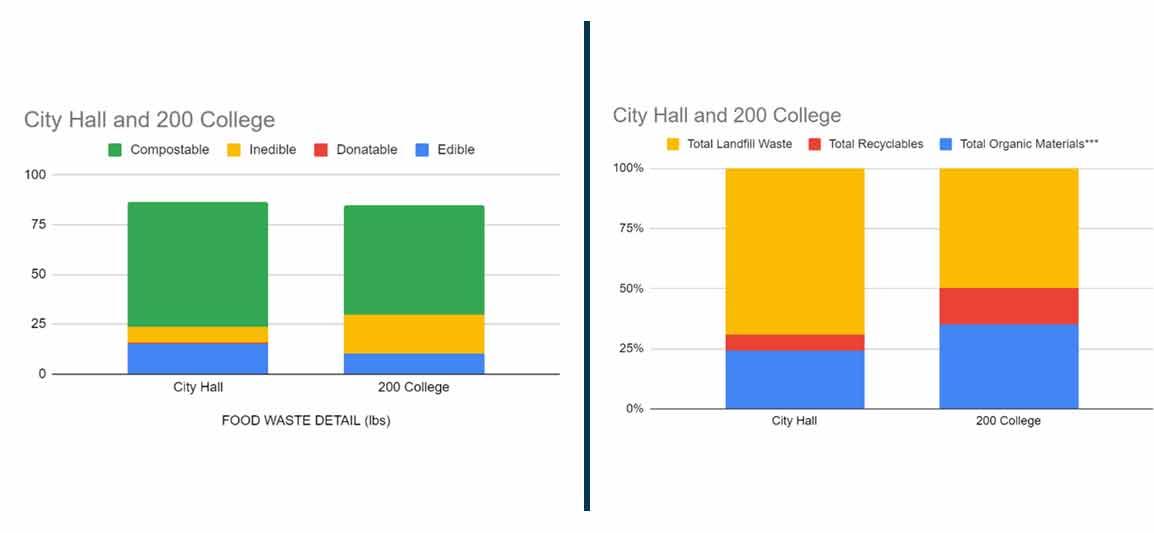
Overall, there is the potential to reduce total waste at 200 College by 50%. This would amount to an average of about 64 pounds per week.
Potential strategies to reduce waste at 200 College St.
We can all play a role in reducing our trash and the burden on the landfill. Below are some recommendations for 200 College St., and all County Campus buildings:
- Recycling
- Encourage all waste bins in common areas to be accompanied by a recycling bin. It is recommended to place a recycling bin at every location where trash bins already exist.
- Place recycling bins in individual offices next to waste bins for easy recycling opportunities.
- Provide “recycle right” posters for each bin spot and recycling literature to the facility.
- Customize these based on the materials repeatedly seen in the waste stream.
- Offer more County-wide Q&A sessions to educate employees on recycling properly within the Buncombe County Solid Waste System.
- Compostable materials
- Phase out single-use coffee cups, solo cups, and Keurig cups for compostable alternatives.
- There was an increase in compostable plateware in this audit, but it was still in the waste stream. Increasing compost collection bin size may help so these items can be more easily composted.
- Encourage all bathrooms have a paper towel bin to divert into compost collection.
- Encourage employees to participate in the compost drop-off program to reduce waste.
- Food waste
- Bring Tupperware to bring leftovers home.
- Ensure inedible food is disposed of in compost collection pails.
- Provide larger compost collection bins for soiled paper and compostable plateware.
Some good news
Following a 2021 waste audit from a week’s worth of trash collected at 200 College St., over half of the waste was found to be compostable, the majority of which was paper towels from the bathroom. The building implemented a compost collection pilot program that included paper towel collection bins in most of the bathrooms after the audit. In the 2022 audit, the total organic materials in the waste stream had reduced significantly due to this pilot program.
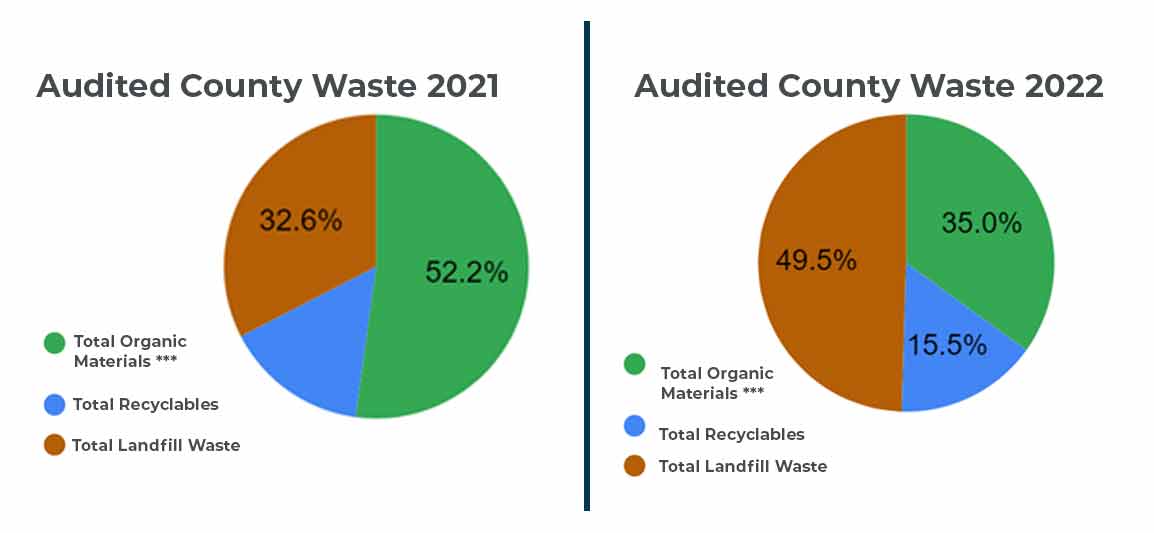
Fine print
The audit was performed in April 2022 and was representative of a post-COVID new normal, meaning that while many have returned to the office and in-person programming has returned, building capacity has not returned to pre-pandemic levels. Reduced staff, visitors, and events all may have had an impact on the amount and categorization of waste collected during the audit.
It should be noted that the extrapolated data for one day’s waste is not as accurate as collecting and sorting a week’s worth of waste. It should also be noted that TD Bank’s waste was also collected with County waste, increasing the weight and volume.
It should also be noted that the City’s waste stream had 10.5 pounds of usable goods and 10.5 pounds of electronics that were included.